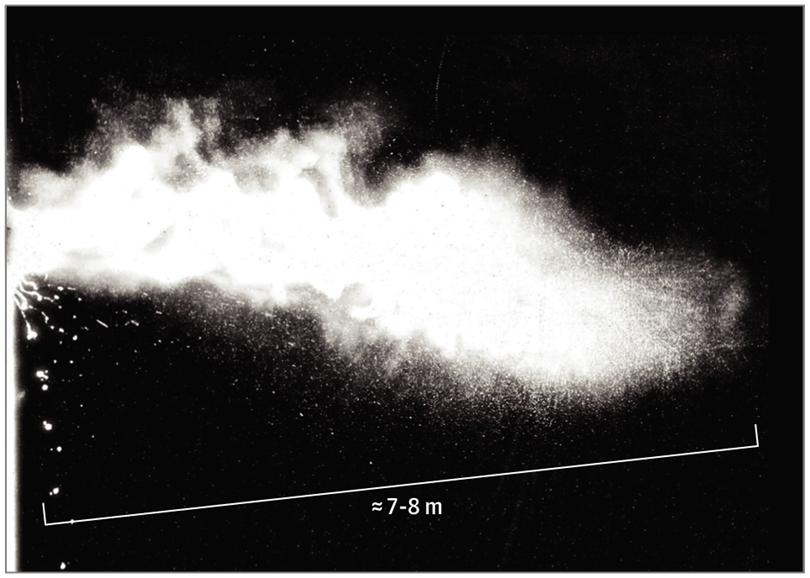Welcome Deaths: Coronavirus and the Open Plan Office

For anybody familiar with that gruesome manifestation of the modern workplace, namely the open plan office, the advent of coronavirus might be something of a relief. The prospects for infection in such spaces is simply too great. You are at risk from droplet-filled babblers, dribblers and gibbering colleagues. Good ventilation and a hyper-vigorous sanitation regime provide little guarantee of safety against the pathogens of a carelessly directed cough.
Employers will have to sort out some measure to ensure continued productivity from workers while still practising those now enshrined words “social distancing” and “1.5 or 2 metres apart.” That the open plan office will be a continued feature of mass productivity (never mind the quality of it all), continues to be the acceptable face of post-coronavirus design. Behind them are the property managers who care little for the quality and much for the efficiency (keeping costs down, maximising the use of space).
The New York Times suggested something along such lines in April. “Workplaces may have significant changes in the long run, including new seating arrangements and the addition of building materials that discourage the spread of germs. New technology could provide access to rooms and elevators without employees having to touch a handle or press a button.” The paper notes the opinions of a vice chairman of a real estate company, a certain Matthew Barlow of Savills who simply sees this as “trying to build confidence and a secure feeling.” Desks can be moved apart; workers can be given more elbow room. Use of sanitisers and around-the-clock armies of disinfecting crews would become an immutable, reassuring norm.
This is all the stuff of implausible, patchwork arrangements. Provided that benching desks were kept to a width of six feet, the guidelines of the Centers for Disease Control and Provision would be complied with. This comes with challenges. “To create a six-foot radius around each employee, companies may have to pull desks apart or stagger employees so they are not facing one another.”
Geoffrey James, contributor editor to the business magazine Inc. is dismissive about such approaches, calling them “ludicrous.” The six-foot guideline was drafted to cope for people in public spaces. For instance, in shopping for goods at a grocery store, you would “keep your distance while transiting from one safe area (like your car or your home) to another.” Social distancing is a dead letter, a nullity in confinement, even with fewer people in a space where employees are held for hours.
The language on infection regarding coronavirus is that of logistics and projections. Designers assume that getting those matters right will be sufficient to minimise the COVID-19 threat. Given the way moisture travels, the essential feature of respiratory infectious disease transmission, they might well be fantasising.
Such moisture is taken to come in either “large” or “small droplets”, a dichotomy that took hold in the 1930s with the tuberculosis work of William F. Wells. COVID-19, however, has ruffled the establishment view on such transmission, one that is still accepted by the World Health Organization and other health bodies. Using methods focused on droplets might be missing the bigger picture on how transmission, notably in coronavirus cases, might work. “Even when maximum containment policies were enforced,” noted Lydia Bourouiba, “the rapid international spread of COVID-19 suggests that using arbitrary droplet size cutoffs may not accurately reflect what actually occurs with respiratory emissions, possible through contributing to the ineffectiveness of some procedures used to limit the spread of respiratory disease.”
Bourouiba offers a rather bleak picture for the office planners taken with merely modifying existing arrangements. Her language is militarily descriptive. Exhalation, sneezing and coughing are part of a continuum of moisture emission. First, the exhalation; then, the “short-range semiballistic emission trajectories,” followed by “a multiphase turbulent gas (a puff) cloud that entrains ambient air and traps and carries within it clusters of droplets with a continuum of droplet sizes.” Any droplet-bearing puffs containing pathogens can travel up to 7-8 metres.

Multiphase turbulent gas cloud from a human sneeze (Image from jamanetwork.com)
Time then to jettison a concept that has been found to defeat, undermine and maul the very things it set out to do. Since becoming a reality of Frank Lloyd Wright’s vision of democratised, spatial openness, supposedly found in the 1906 Larkin Administration Building in New York, it has continued to attract stern critics and a distinct imbecilic enthusiasm.
Did such plans enhance cooperation in a transparent setting with fewer boundaries on human “collaboration”? Not so, according to Ethan S. Bernstein and Stephen Turban. The authors found a decline in face-to-face interaction “with an associated increase in electronic interaction.” From such open-planned spaces emerge the hostile, the estranged, the disengaged.
Good for the well-being of employees? Think again, suggest Rachel L. Morrison and Roy K. Smollan, though the authors were still convinced that a decent open plan arrangement could be arrived at in offices given “good technical design and thoughtful ergonomic assessment of the needs of employees and the requirements of their tasks.”
As Adams reminds us, architects and office designers have not been ignorant to the incubating and transmitting qualities of open plan offices when it comes to disease. “They just didn’t care. Open-plan offices emerged from the same corporate mentality as the ‘work till you drop’ ethos that discourages sick days and vacations.”
Britain’s combative broadcaster Jeremy Paxman is even more pointed in his blows. “An open-plan office is a way of telling you that you don’t matter.” You get given allotted hours at some pod or work station; personal touch is eschewed “while opposite you someone you don’t know shouts into the telephone to a person sitting in an almost identical human warehouse in Bangalore.”
In the meantime, repurposing the home as a workplace is seen as an alternative. This would, in turn, reduce work travel, traffic chaos, pollution. Not all can do so but there is much to be said for those who can. The open plan ideologues, however, still have a following. For Sarah Holder, writing in CityLab, “A pivot to walls is probably still a long way away.” Tinker around the edges; cloak the message with a number of suitably chosen weasel words; hope that the workers will buy it despite being terrified. “The broad stroke is that the open office is over,” suggests the CEO of office interior design firm Knotel, Amol Sarva, “[but] there’s a bunch of different things that that might mean.” Through the looking glass they come.
Like what we do at The AIMN?
You’ll like it even more knowing that your donation will help us to keep up the good fight.
Chuck in a few bucks and see just how far it goes!










3 comments
Login here Register here-
TuffGuy
-
Kerri
-
king1394
Return to home pageI beg to differ that the open plan office is the worst thing done to office workers. That title belongs to the more recent advent of “hot desking”. The idea that each day you turn up for work and spend the first little while trying to find a vacant desk somewhere in the building, complete with all the germs and disease and other human detrious from whomever was present on the previous day. Then you could spend perhaps most of the morning wandering around trying to locate the rest of your team members.
Hot desking is definitely the worst and most unproductive workplace innovation ever thought up.
Someone in Israel came up with a brilliant concept based on the incubation (four days) and period before symptoms (10 days) of the virus. Each staff member works 4 days in office and 10 days at home. The staff rotate in shifts to maintain distance whilst in office.
Coz we all know when people work at home they don’t come into contact with any other humans! 🙄🙄🙄
Meanwhile most lifts are too small for adequate social distancing. So multi-story buildings are problematic too